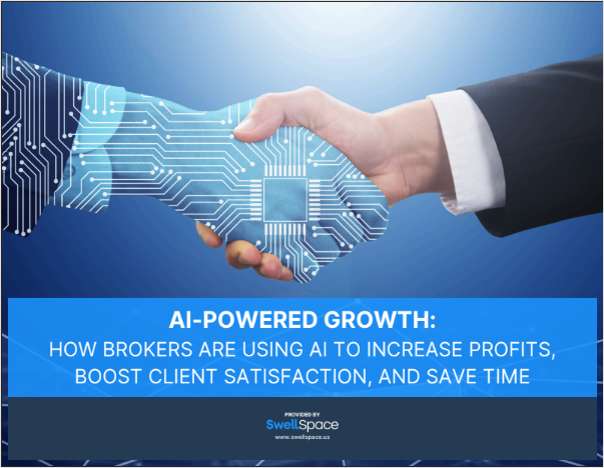Blame it on an economy still on the mend or go so far as to credit Obamacare. Either way, there's fresh evidence of a slowing in health inflation in the latest survey of employers by Towers Watson and the National Business Group for Health.
The survey also affirmed a trend abundantly familiar to a growing number of working Americans: cost-sharing is on the rise.
The cost of providing employer-sponsored health care benefits, according to the survey, is expected to increase 4.4 percent this year, climbing to $9,560 per employee compared to last year's $9,157.
That's a bigger jump between last year and 2012 but not much of one. Employer health costs in that period rose 4.1 percent, the lowest increase in 15 years.
The survey also found that the employees’ share of premiums increased nearly 7 percent, to $2,975, this year.
Out-of-pocket costs also increased. The total employee cost share has climbed from 34.4 percent in 2011 to 37 percent in 2014. Employees now pay over $100 more each month for health care compared with just three years ago.
What’s driving these numbers? Reduced direct coverage, in most cases.
As outlined by the results of a TW/NBGH survey, companies are gradually shedding the components of their health plans because everyone else is doing it. The competitive advantage has swung to those who have divested themselves first of the burdensome expense of employee health coverage.
To be sure, this detailed survey of nearly 600 major U.S. companies offers evidence that plenty of employers (95 percent of respondents) will continue to view benefits packages that include health coverage as something worth retaining. But almost the same number — 92 percent — plan to make changes in the near-term to lessen their coverage responsibility.
The big-picture trend cited by the data is one of the enterprise backing away from health coverage as other options emerge.
Employers are banking on the one-two punch of private and public exchanges to take over the task of providing affordable health insurance to current and former employees. While few employers are willing to completely pull the plug on coverage, there are some willing to do so. And, if the trends spotted by this survey continue, these leaders will be cited as the precedent by others to follow in their footsteps in order to remain competitive.
“Despite the moderation, health care costs continue to outpace inflation and remain a major concern for U.S. employers given the challenging macroeconomic environment,” said Ron Fontanetta, senior health care consultant for Towers Watson. “To find more effective ways to manage health costs, many employers are focusing on reshaping their health strategy for the next three to five years.”
Here are some of the results that support the un-coverage reaction:
Dependent coverage
- 49 percent of respondents said they increased employee contributions for dependent tiers at higher rates than for individuals. Another 19 percent expect to make this move next year.
- 24 percent said they now use spousal surcharges of around $100 per month when other coverage is available to the spouse.
- 70 percent believe offering subsidized coverage for spouses is important today. But for 2015 and beyond, only 56 percent believe that subsidized health care for spouses will be very important.
Employee cost-sharing
- Employees’ share of premiums increased nearly 7 percent this year. The total employee cost share rose to 37 percent in 2014, up from 34.4 percent in 2011.
- Employees now pay over $100 more each month for health care compared with just three years ago.
- Account-based health plans are the top item these days, with three-quarters of respondents acknowledging that such programs are at least one component of their package. The most popular, the health savings account, is essentially managed by the company but funded by the employee. In its crystalized form, these employee-owned plans shift both cost and responsibility to the individual.
- 16 percent of respondents having adopted account plans as their sole health insurance option for employees, with nearly one-third of all companies indicating they may only offer these plans in 2015.
Exchange options
- Two-thirds of companies believe that private exchanges will offer a viable alternative to employer-sponsored coverage for active employees as early as 2015. Many also view the private
 exchanges as the future coverage for their retirees.
exchanges as the future coverage for their retirees. - Nearly two-thirds of employers that offer a sponsored plan today for retirees say they plan to send all of their pre-Medicare-age retiring workers to public exchanges.
- While the survey indicated that employer confidence in public exchanges is still low, it revealed that respondents are carefully watching the evolution of the exchanges as they weigh scrapping employee health insurance and helping them find exchange coverage.
“Most employers are taking a wait-and-see approach to gauge whether these models can deliver greater value for their active employees than self-managed programs,” said Helen Darling, president and CEO of the NBGH.
Photo: The NBGH's Helen Darling.
While two in five respondents cited the Patient Protection and Affordable Care Act as the primary driver of their health care strategy, the slow growth in health spending can mostly be attributed to the economy.
Between 2009 and 2011, government statistics show that health spending jumped 3.9 percent every year, marking the slowest growth since tracking began in 1960. The trend led to an average growth of 4.2 percent each year from 2008 to 2012. That was much lower than the growth of 8.8 percent between 2001 and 2003.
Although the recession officially came to an end in 2009, many experts project slower-than-typical health care spending for several more years.
The economy accounted for 77 percent of the reduced growth in health spending, a Kaiser Family Foundation study last year found, while the other 23 percent was attributed to changes in the health care system, such as higher deductibles and other cost-sharing measures.
The TW/NBSH survey was completed by 595 employers between November and January. Respondents collectively employ 11.3 million full-time employees, have 7.8 million employees enrolled in their health care programs and represent all major industry sectors.
Also read:
Benefits managers missing out on key cost-saving moves
Employers turn to private exchanges
Small businesses hit by rate increases of 20 percent or more
Complete your profile to continue reading and get FREE access to BenefitsPRO, part of your ALM digital membership.
Your access to unlimited BenefitsPRO content isn’t changing.
Once you are an ALM digital member, you’ll receive:
- Breaking benefits news and analysis, on-site and via our newsletters and custom alerts
- Educational webcasts, white papers, and ebooks from industry thought leaders
- Critical converage of the property casualty insurance and financial advisory markets on our other ALM sites, PropertyCasualty360 and ThinkAdvisor
Already have an account? Sign In Now
© 2025 ALM Global, LLC, All Rights Reserved. Request academic re-use from www.copyright.com. All other uses, submit a request to [email protected]. For more information visit Asset & Logo Licensing.








